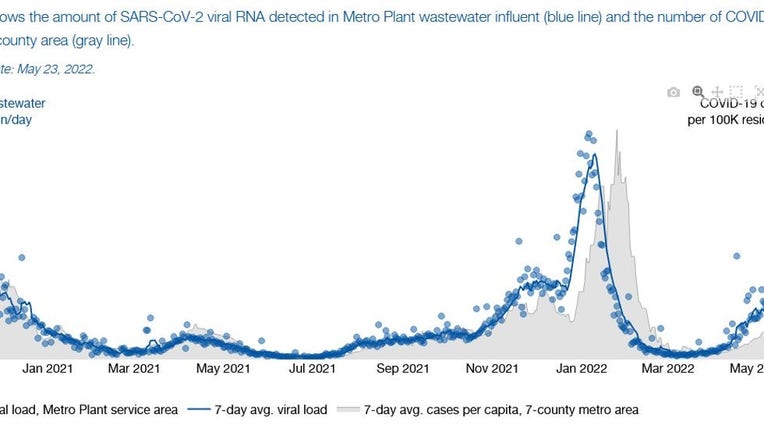Surveillance shows drop in COVID viral load in Twin Cities sewage

COVID-19 wastewater data shows the number of cases could begin to trending lower. (Metropolitan Council)
MINNEAPOLIS (FOX 9) - Wastewater surveillance shows there has been a drop in the viral load of COVID-19 in Twin Cities sewage, suggesting COVID-19 cases will begin trending lower.
The viral load of COVID-19 in waste is trending lower, decreasing from May 17 through May 23 by 38% compared to the week prior, data from the Metropolitan Council show. Wastewater tracking has been a good indicator of the COVID-19 spread in the Twin Cities and elsewhere.
The Metropolitan Council says the Omicron subvariant BA.2 made up 88% of the SARS-CoV-2 RNA in Twin Cities sewage, and the BA.2 sub-lineage BA.2.12.1 made up 57% of COVID-19 RNA in Twin Cities wastewater. Meanwhile, subvariants BA.4 and BA.5 made up 11% of the COVID-19 RNA in wastewater, up from 7% the week prior.
Other indicators of the level of COVID-19 in Minnesota are also suggesting the latest wave of the pandemic has peaked. The number of counties the Centers for Disease Control and Prevention has designated as high COVID-19 risk has dropped to seven from 19. And the seven-day average of new infections in Minnesota dropped to 1,805 on May 20, down from more than 2,100 on May 11 (Note: This doesn't include at-home tests).
Meanwhile. on Friday, the Minnesota Department of Health reported 2,269 new cases and nine new deaths.

